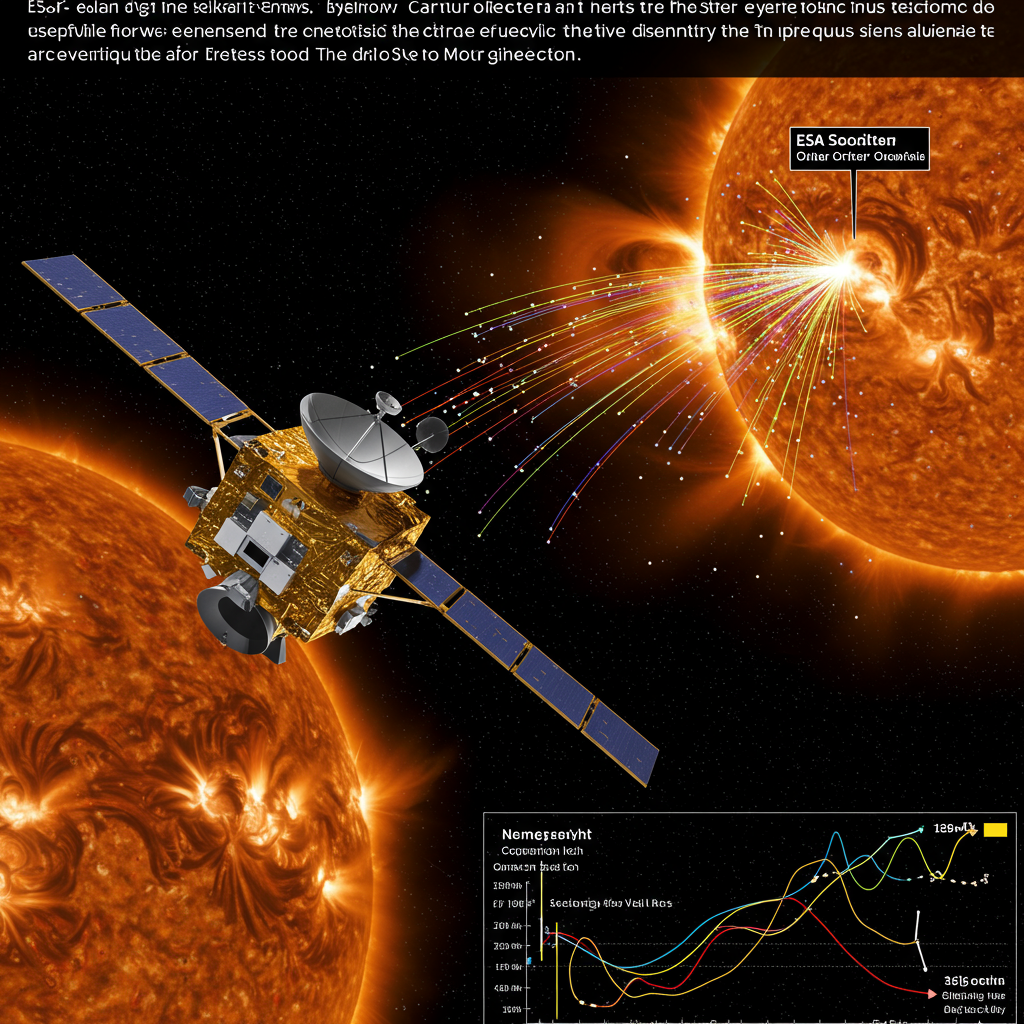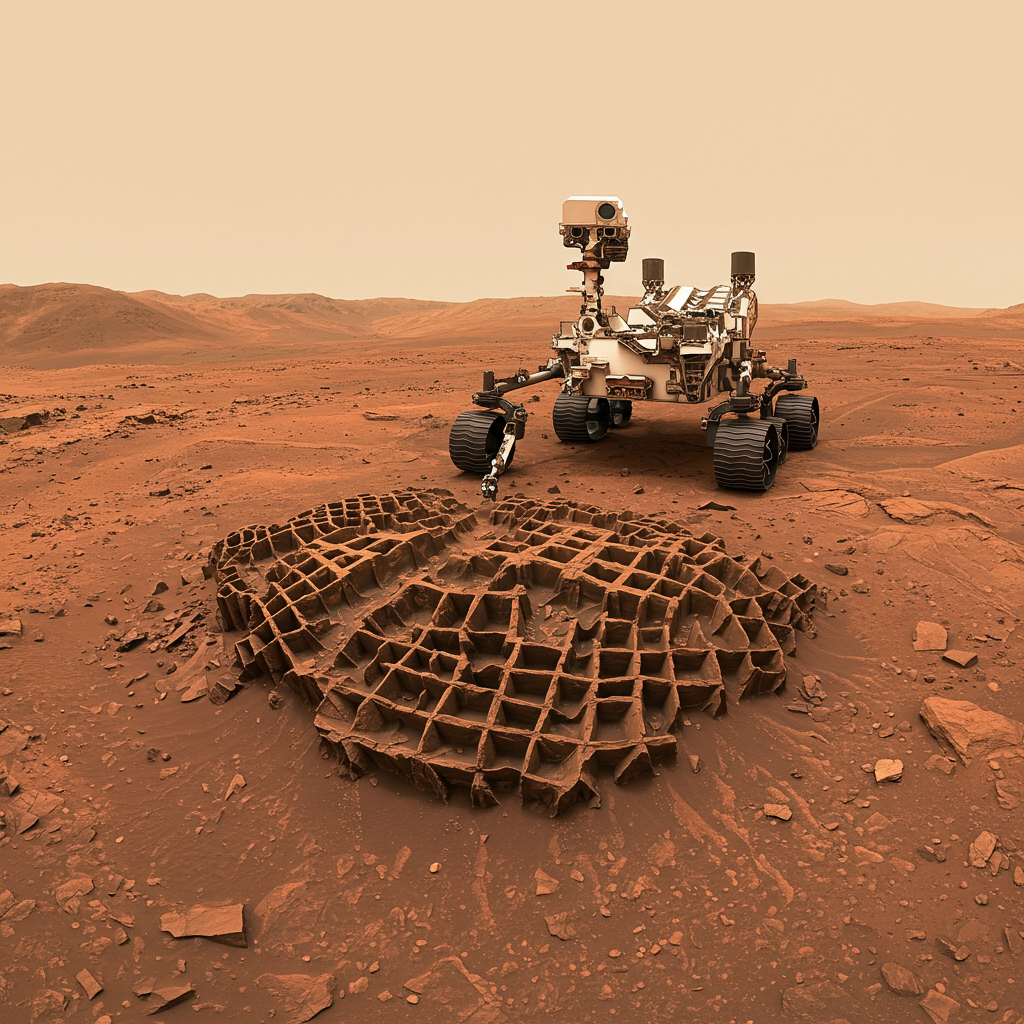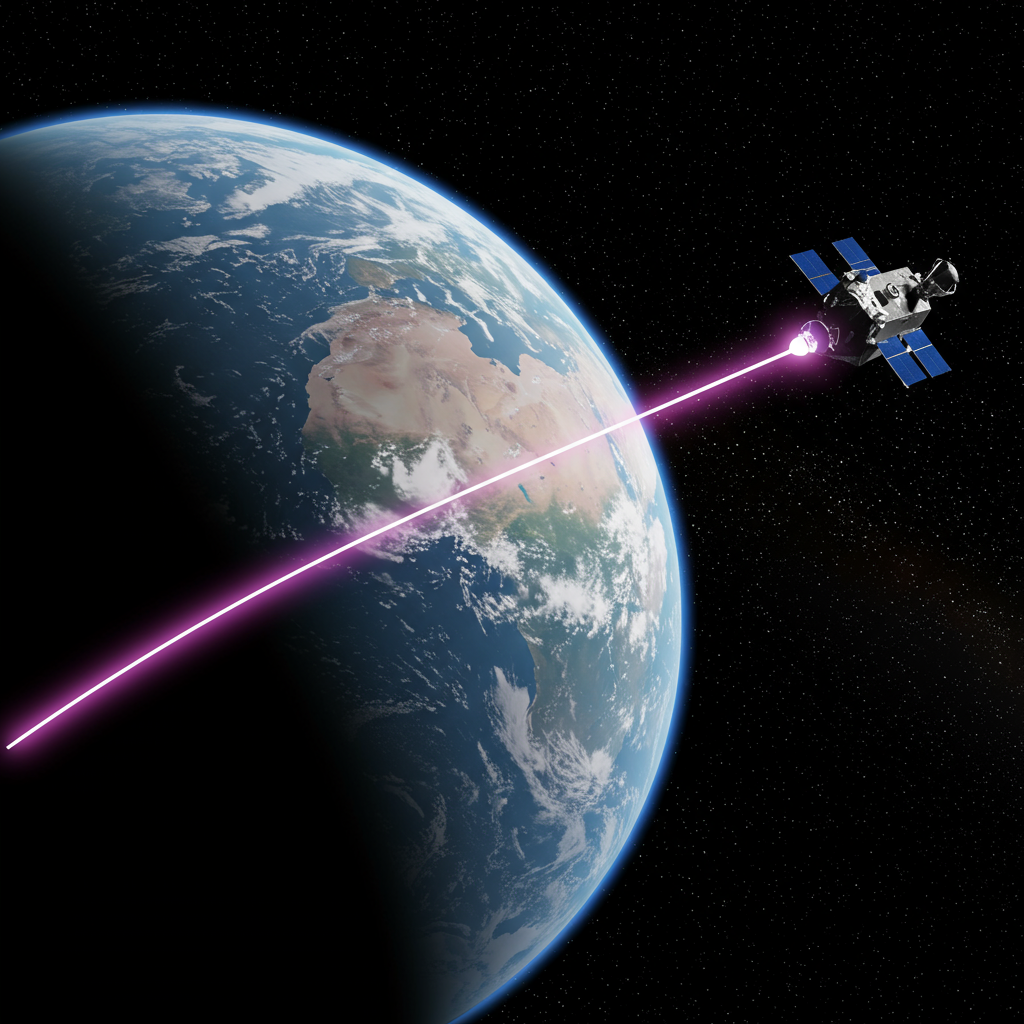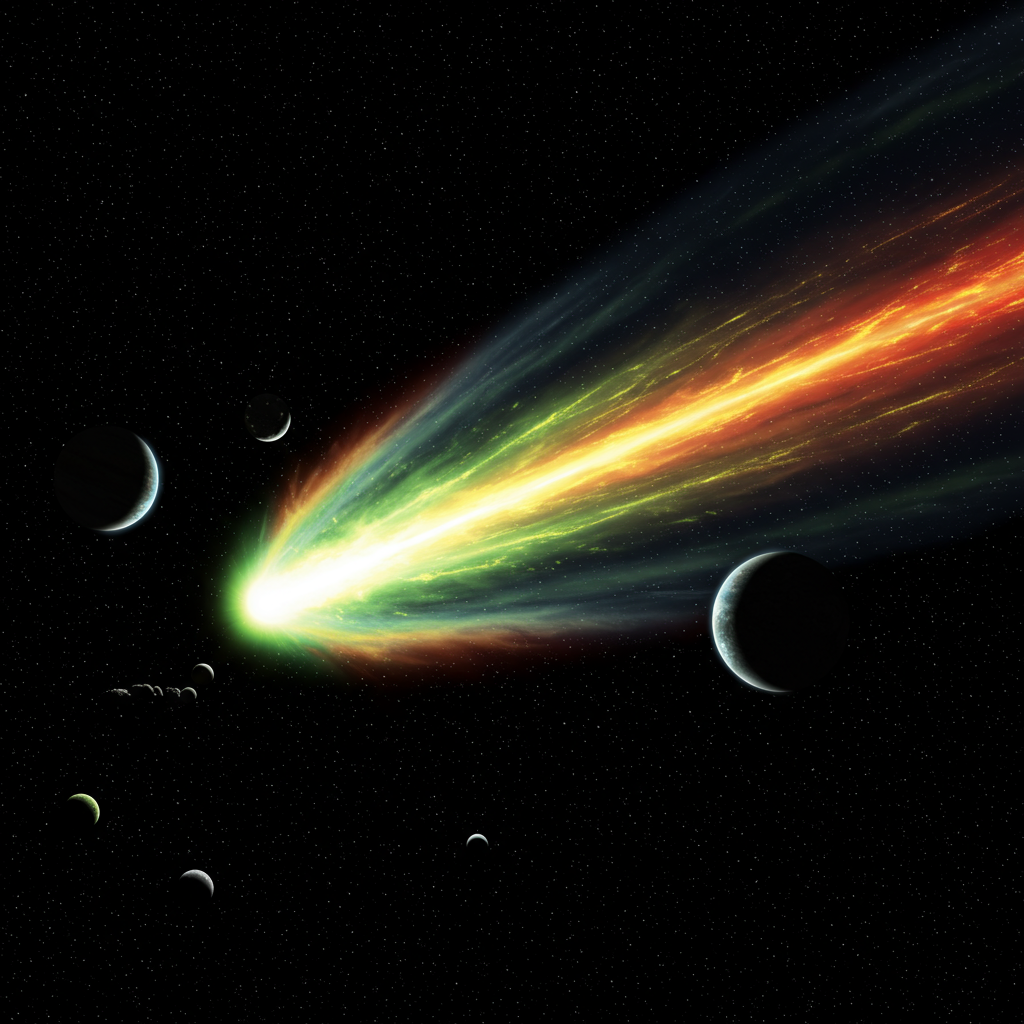A monumental achievement in solar science has finally revealed the hidden origins of the Sun’s most energetic particles. For years, scientists puzzled over how our star, a colossal particle accelerator, launched streams of high-speed electrons into space. Now, thanks to the European Space Agency’s (ESA) Solar Orbiter, we possess a definitive answer. This groundbreaking discovery offers unparalleled insight into Solar Energetic Electrons (SEEs), identifying two distinct types and their unique solar sources, critically advancing our ability to protect Earth from hazardous space weather.
The Sun: Our Solar System’s Ultimate Particle Accelerator
Our Sun is far more than a source of light and warmth; it is the most powerful natural particle accelerator in our solar system. It propels electrons to incredible velocities, nearing the speed of light, across vast distances. These high-speed particles, known as Solar Energetic Electrons (SEEs), fill the heliosphere and pose a significant threat to our technological infrastructure and astronauts. Understanding their journey, from solar genesis to interplanetary travel, has been a long-standing challenge for heliophysicists.
The key to unlocking this mystery lay in precisely tracing these energetic electrons back to their explosive beginnings on the Sun’s surface. What scientists uncovered were not simply random bursts, but two clearly defined categories of SEE events, each with distinct characteristics and origins.
Unmasking Two Distinct Origins for Solar Energetic Electrons
The Solar Orbiter’s comprehensive observations allowed researchers to classify SEEs into two main types:
- Impulsive Particle Events: These are rapid, intense bursts of energetic electrons. They originate directly from powerful solar flares, which are sudden eruptions from smaller, highly active regions on the Sun’s surface. Think of them as quick, sharp blasts of particles.
- Gradual Particle Events: In contrast, these events involve a more prolonged and broader swell of particles. They are linked to coronal mass ejections (CMEs), which are massive outbursts of hot plasma and magnetic fields expelled from the Sun’s outer atmosphere. These release a steady stream of energetic electrons over an extended period.
Alexander Warmuth, lead author from the Leibniz Institute for Astrophysics Potsdam (AIP), highlighted this clear distinction. “We see a definitive split,” he noted, “between ‘impulsive’ events tied to flares and ‘gradual’ ones associated with more extended CMEs.” This confirms a theory long suspected by the scientific community but previously unproven in such detail.
Solar Orbiter’s Unprecedented View Delivers Breakthroughs
The ESA Solar Orbiter mission proved instrumental in this landmark discovery. Its unique design allowed it to orbit far closer to the Sun than any previous mission, providing an unparalleled vantage point. Between November 2020 and December 2022, the spacecraft meticulously observed over 300 bursts of Solar Energetic Electrons, creating the most comprehensive catalog of these events to date.
This close-up perspective was crucial. As Warmuth explained, “By going so close to our star, we could measure the particles in a ‘pristine’ early state and thus accurately determine the time and place they started at the Sun.” The mission utilized eight of its ten state-of-the-art instruments, combining in-situ measurements with remote sensing. The Energetic Particle Detector (EPD) directly sampled the electron streams, while instruments like the Extreme Ultraviolet Imager (EUI), Spectrometer/Telescope for Imaging X-rays (STIX), and Metis observed the solar phenomena responsible. This synergy allowed scientists to draw a direct link between energetic electrons in space and their exact source events on the Sun.
The Engine Behind Solar Eruptions: Magnetic Reconnection
While Solar Orbiter identified where SEEs come from, another pivotal discovery by NASA’s Parker Solar Probe (PSP) sheds light on how these powerful solar events — flares and CMEs — are triggered. The Parker Solar Probe, managed by the Johns Hopkins University Applied Physics Laboratory, directly observed magnetic reconnection in the solar atmosphere for the first time. This groundbreaking finding, led by the Southwest Research Institute (SwRI) and published in Nature Astronomy, resolved a 70-year-old mystery.
Magnetic reconnection is a fundamental process where magnetic field lines sever and violently reconfigure, releasing immense amounts of stored magnetic energy. On the Sun, this energy release is the driving force behind the explosive solar flares and massive coronal mass ejections. PSP’s unprecedented flight through a solar eruption on September 6, 2022, provided direct, in-situ measurements of this phenomenon. This vital data validates decades of theoretical models, giving scientists a much clearer picture of the underlying physics that ultimately launch Solar Energetic Electrons into space. It’s the engine powering the particle accelerator.
Decoding “Flight Delays” in Space Travel
Another perplexing question revolved around the “flight delays” of these particles. When a flare or CME occurs, there often appears to be a significant lag – sometimes hours – between the event on the Sun and the detection of its energetic electrons in space. Scientists wondered if this was a delay in release or detection.
Laura Rodríguez-García, an ESA Research Fellow, clarifies that this lag is largely due to the electrons’ challenging journey through space. The region between the Sun and Earth is not an empty vacuum. It is constantly filled by the solar wind – a stream of charged particles carrying the Sun’s magnetic field. As energetic electrons travel, they encounter turbulence, magnetic fields, and other charged particles. This turbulent environment confines, scatters, and disturbs the electrons, making their detection a non-immediate process. These scattering effects become more pronounced the further the particles travel from the Sun.
Safeguarding Our Space Future: The Space Weather Imperative
The ability to distinguish between impulsive and gradual Solar Energetic Electron events holds critical implications for space weather forecasting. Accurate predictions are essential for protecting our satellites, communication systems, power grids, and astronauts from the potentially devastating effects of solar storms.
Of the two types, CME-related gradual events are generally more concerning for space weather. They tend to carry a larger number of high-energy particles and release them over longer durations, posing a greater threat of damage. Knowing the precise origin allows scientists to better assess the potential impact of an impending solar event. Daniel Müller, ESA Project Scientist for Solar Orbiter, emphasized this point: “Knowledge such as this from Solar Orbiter will help protect other spacecraft in the future.” This research, a collaborative effort involving European and US scientists, is a testament to the power of international teamwork in advancing fundamental science and ensuring space safety.
The Next Frontier: Vigil and Smile Missions
Looking ahead, ESA is not slowing down. The agency plans to further enhance our space weather monitoring capabilities with two groundbreaking missions:
Vigil Mission (Launch 2031): This revolutionary mission will take a unique position to observe the ‘side’ of the Sun for the very first time. By monitoring solar activity from a different angle, Vigil will provide continuous insights and detect potentially hazardous solar events before they rotate into view from Earth. This will offer crucial advance warning regarding their speed, direction, and potential impact.
Smile Mission (Launch Next Year): The Smile mission will focus on understanding how Earth’s protective magnetic field interacts with the Sun’s constant solar wind and sporadic bursts of fierce particles. By studying these interactions, Smile will deepen our comprehension of how our planet responds to solar storms.
These upcoming missions, building on the profound discoveries of Solar Orbiter and Parker Solar Probe, mark the next chapter in our quest to understand and mitigate the effects of our dynamic star.
Frequently Asked Questions
How does the Sun accelerate particles to such high speeds?
The Sun accelerates particles, primarily electrons, to near light-speed through powerful events like solar flares and coronal mass ejections (CMEs). These events are fundamentally driven by magnetic reconnection in the Sun’s atmosphere. During magnetic reconnection, magnetic field lines break and rapidly reconfigure, releasing vast amounts of stored magnetic energy. This explosive energy release propels charged particles, including Solar Energetic Electrons (SEEs), into space at extreme velocities, making the Sun a natural particle accelerator.
Which space missions are crucial for understanding Solar Energetic Electrons?
Several missions are vital for studying Solar Energetic Electrons (SEEs) and their origins. The ESA Solar Orbiter mission made the breakthrough of distinguishing two types of SEEs (impulsive from flares, gradual from CMEs) by observing hundreds of events close to the Sun. The NASA Parker Solar Probe (PSP) directly observed magnetic reconnection, the underlying mechanism for these solar eruptions. Future missions like ESA’s Vigil will provide early warnings of solar events from a unique side view, while ESA’s Smile will study Earth’s magnetic field interaction with solar particles, collectively enhancing our understanding and protection against SEEs.
Why is distinguishing between different types of Solar Energetic Electrons important for Earth?
Distinguishing between impulsive (flare-related) and gradual (CME-related) Solar Energetic Electrons is critically important for space weather forecasting and Earth’s protection. CME-related events typically carry more high-energy particles over longer durations, posing a greater threat to satellites, power grids, and astronauts. By identifying the specific origin of SEEs, scientists can more accurately predict the severity, trajectory, and timing of incoming solar storms. This improved forecasting allows for better preparedness, enabling protective measures for vital infrastructure and personnel in space.




